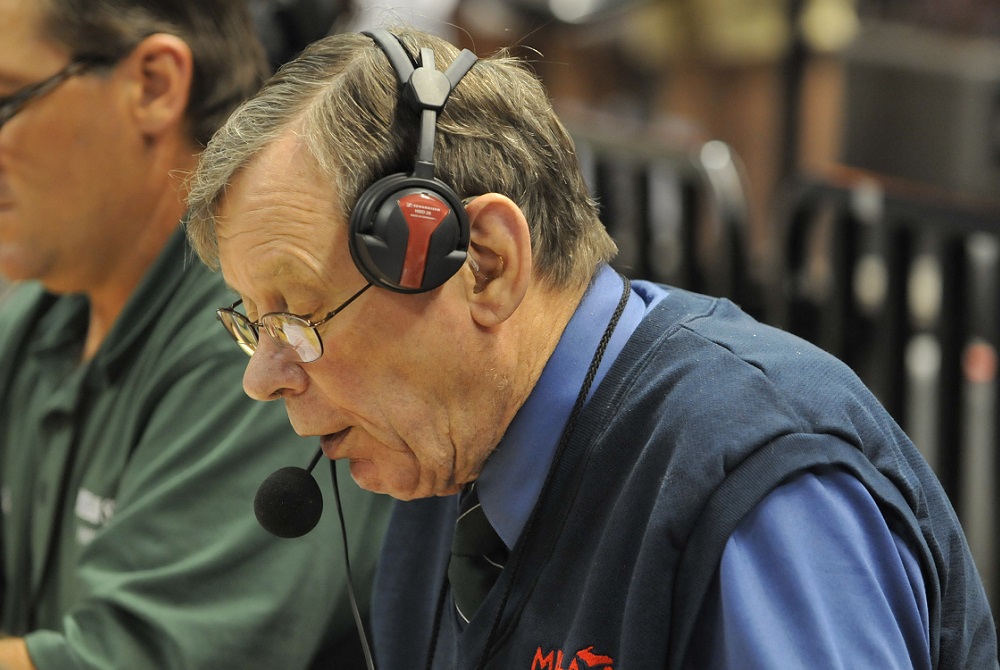
Eight-Player Options
March 10, 2017
Put this in the category of “No good deed goes unpunished.”
In 2011, the MHSAA provided an additional playoff for Class D schools sponsoring 8-player football. This helped save football in some schools and helped return the game of football to other schools. But now that the number of 8-player programs has expanded from two dozen in 2011 to more than 60, there are complaints:
-
Some complaints come out of a sense of entitlement that all final games in both the 8-player and 11-player tournament deserve to be played at Ford Field.
-
Some complaints come from Class C schools whose enrollments are too large for the 8-player tournament. Class C schools which sponsor the 8-player game have no tournament at all in which to play, regardless of where the finals might be held.
-
Some complaints come from Class D schools which protest any suggestion that Class C schools – even the smallest – be allowed to play in the 8-player tournament.
There are now three scenarios emerging as the most likely future for 8-player football:
-
The original plan ... A five-week, 32-team tournament for Class D schools only, with the finals at a site to be determined, but probably not Ford Field.
-
Alternative #1 ... Reduce the 11-player tournament to seven divisions and make Division 8 the 8-player tournament with 32 Class D teams in a five-week tournament, ending at Ford Field.
-
Alternative #2 ... Conduct the 8-player tournament in two divisions of 16 Class D teams, competing in a four-week playoff ending in a double-header at the Superior Dome on the Saturday before Thanksgiving.
The pros and cons of these options are being widely discussed. Sometimes the discussions have a tone that is critical of the MHSAA, which comes from those who forget that it was the MHSAA itself which moved in 2011 to protect and promote football by adding the 8-player playoff tournament option for its smallest member schools. That Class D schools now feel entitled to the Ford Field opportunity and Class C schools want access to an 8-player tournament is not unexpected; but criticism of the MHSAA’s efforts is not deserved.

In Memoriam: Erik O. Furseth (1930-2022)
By
Geoff Kimmerly
MHSAA.com senior editor
March 1, 2022
For 50 years, Erik O. Furseth’s voice chimed throughout MHSAA and Michigan State University athletic events. That voice surely will continue to live in the memories of the many who cherished listening to him, as he died Monday evening at the age of 91.
Furseth began as the public-address voice of MHSAA Boys Basketball Finals in 1968 and continued well into his 80s as those games moved from Jenison Field House to other locations across the Lower Peninsula and eventually settled into Breslin Center. He also was the longtime MHSAA football championship game voice going back to their days at the Pontiac Silverdome and provided the narration for MHSAA Baseball Finals for a decade. He announced his last MHSAA event in 2018.
An MSU basketball player during the early 1950s, the Cleveland Heights, Ohio, native played in the Spartans’ first Big Ten game in 1951. A forestry student initially, Furseth switched to communications. He later became a legendary rock-n-roll radio DJ in Lansing, and for a decade hosted Saturday night dances at the Lansing Civic Center that drew 1,000 teenagers a night – and a surprise performance by a young Stevie Wonder.
Furseth’s voice continued to be known particularly by Spartan fans as the homecourt voice for MSU basketball from 1968-2002 and MSU football from 1971-98. For more, see this feature from the MHSAA Basketball Finals programs written in 2013.
Furseth moved from East Lansing to Traverse City about 25 years ago. Click for his obituary and funeral arrangements.
Longtime MHSAA Public Address announcer Erik O. Forseth died Monday evening at the age of 91. Nearly every MHSAA Boys Basketball Final for 50 years started the same way – with Erik introducing both teams. Our thoughts are with his family and friends. pic.twitter.com/CA5iRKt39t
— MHSAA (@MHSAA) March 1, 2022

